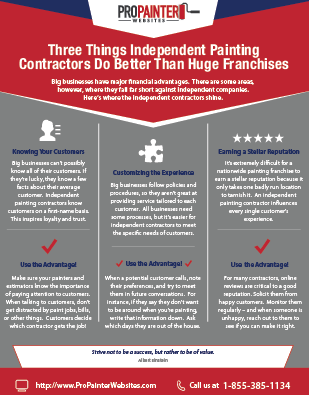Comprehending Seasonal Influences On Commercial Exterior Paint: Necessary Knowledge For Success
Comprehending Seasonal Influences On Commercial Exterior Paint: Necessary Knowledge For Success
Blog Article
Content Created By-Carlson Browne
When you're intending a commercial exterior painting project, seasonal factors can make or break your outcomes. You'll want to think about how temperature and moisture influence paint application and drying out times. Choosing the right period can guarantee your paint sticks correctly and lasts longer. But which painter plymouth are really the very best for this type of job? Let's discover the key elements that can impact your project's success.
The Impact of Temperature Level on Paint Application
When you're preparing a business exterior painting task, the temperature can substantially affect how well the paint sticks and dries out.
Ideally, you want to repaint when temperatures vary between 50 ° F and 85 ° F. If it's also cool, the paint may not treat appropriately, resulting in issues like peeling or cracking.
On the other side, if it's too hot, the paint can dry out as well quickly, stopping appropriate attachment and resulting in an unequal surface.
You must additionally think about the time of day; early morning or late afternoon provides cooler temperature levels, which can be extra desirable.
Always inspect the manufacturer's recommendations for the details paint you're using, as they frequently offer support on the excellent temperature variety for ideal outcomes.
Humidity and Its Impact on Drying Times
Temperature isn't the only environmental aspect that affects your industrial external paint task; humidity plays a significant duty too. High moisture levels can reduce drying times significantly, affecting the overall quality of your paint task.
When the air is saturated with wetness, the paint takes longer to treat, which can cause issues like bad attachment and a higher threat of mold development. If you're painting on a specifically moist day, be planned for extensive wait times between coats.
It's crucial to keep an eye on local climate condition and plan appropriately. Preferably, aim for moisture levels in between 40% and 70% for optimum drying.
Maintaining these factors in mind ensures your project stays on track and supplies a long-term finish.
Best Seasons for Commercial Exterior Paint Projects
What's the most effective time of year for your industrial outside paint projects?
Spring and very early loss are usually your best bets. During these periods, temperatures are moderate, and moisture levels are frequently reduced, developing excellent conditions for paint application and drying.
Prevent summertime's intense heat, which can cause paint to dry also quickly, causing bad adhesion and coating. Similarly, winter months's cold temperature levels can hinder appropriate drying out and healing, taking the chance of the long life of your paint task.
Suggested Site for days with temperatures between 50 ° F and 85 ° F for optimum results. Keep in mind to examine the neighborhood weather forecast for rainfall, as damp conditions can spoil your task.
Planning around these aspects guarantees your painting job runs smoothly and lasts much longer.
Final thought
Finally, intending your business external paint tasks around seasonal factors to consider can make a significant difference in the result. By scheduling work during the suitable temperatures and moisture degrees, you'll make sure far better bond and drying times. Remember to keep an eye on regional weather report and select the right time of year-- springtime and very early loss are your best bets. Taking exterior house painting plymouth will certainly help you accomplish a durable and specialist coating that lasts.
